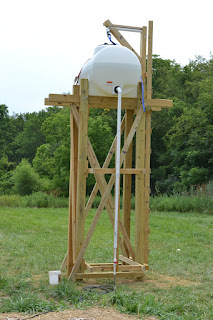The New Leaf Eco Center’s mycoremediation project has been progressing
slowly this summer because of the heat and lack of consistent rain. Mushrooms are more closely related to us than they are to plants so they require weather conditions similar to what we are comfortable with. However,
the site is finally starting to see some growth thanks to the cooler whether and rain.
Earlier in the season we built a water tower to help us keep the site at the
proper moisture level, and it has proven to be very effective. Our plan is to conduct
soil testing at the site in mid September and plant raspberry shortly after.
Another exciting aspect of the New Leaf Eco Center is the
proposed boardwalk that will connect the trail to the forest restoration
section, and eventually the township trail. The construction of the boardwalk will begin this fall.
















